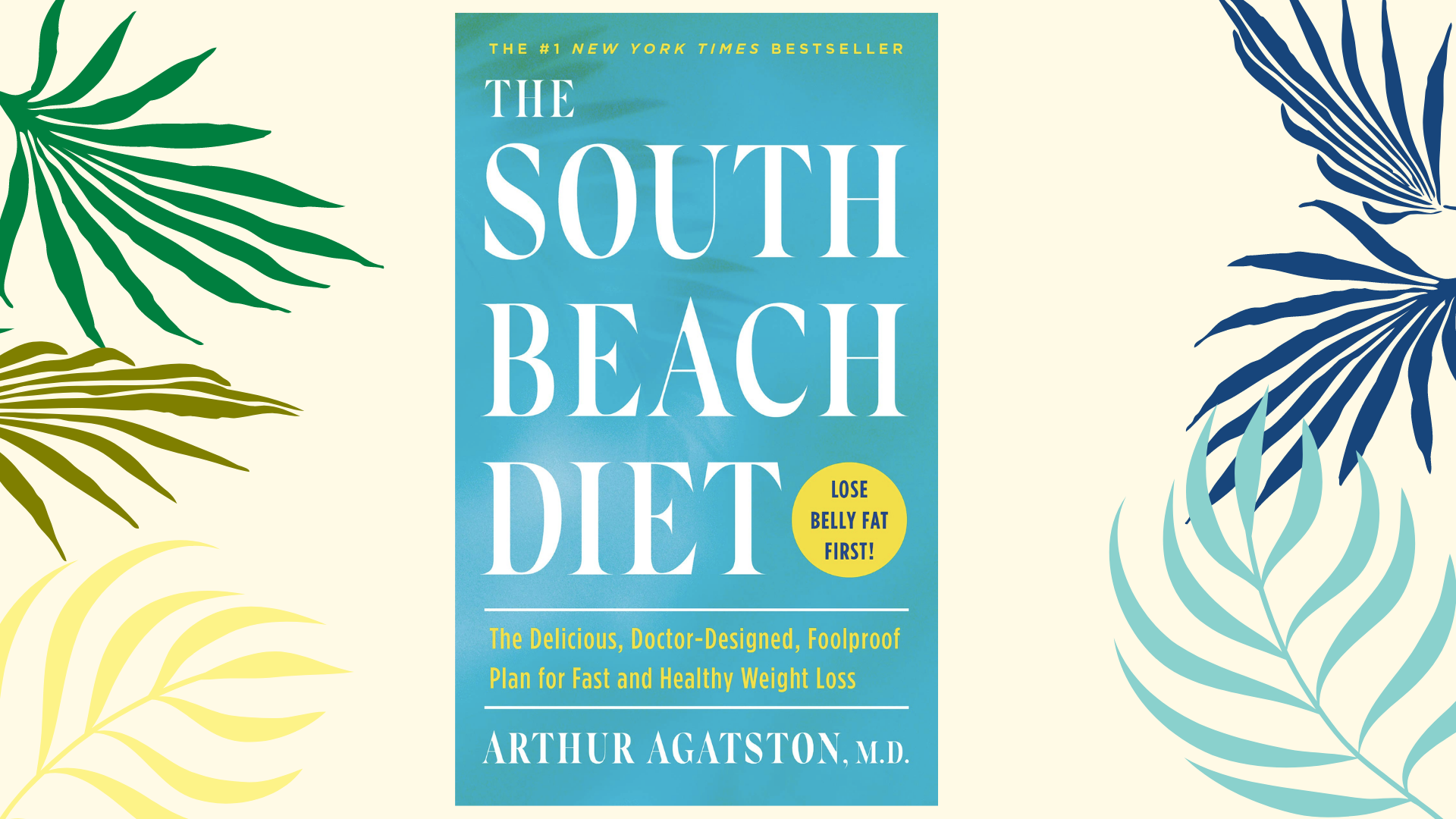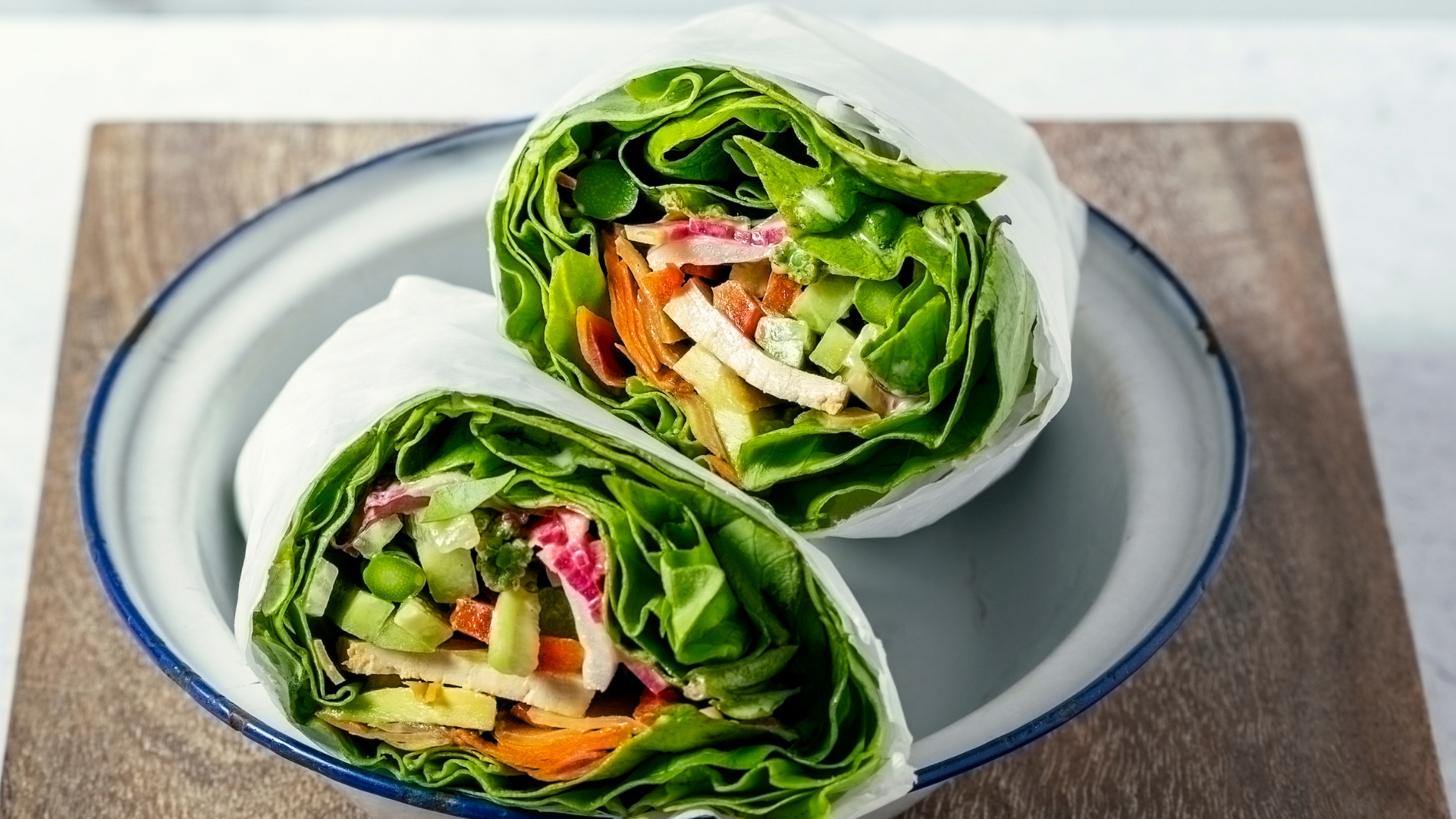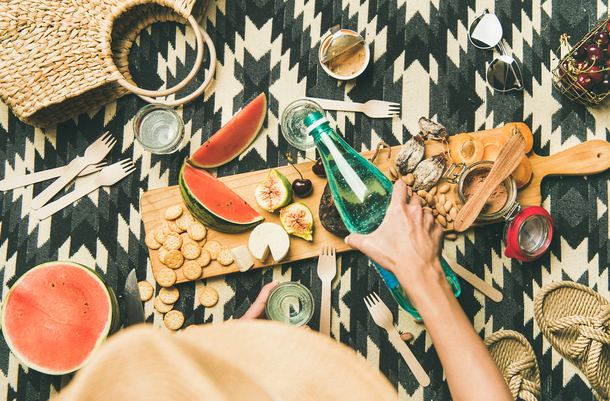What is the South Beach diet and do nutritionists recommend it?
You can have three meals a day plus snacks on the South Beach Diet, which was devised by a heart specialist from Miami. This sensible plan could help you lose 13lbs in two weeks


The south beach diet plan is a three-phase diet that includes complex carbs and good fats.
White sandy beaches, sunshine and delicious street food - Miami is famous for a few things. And the South Beach diet is definitely another on the list. The low carb diet plan has been around for over two decades now, advocating a sensible, healthy eating approach to help dieters lose belly fat without starving themselves or eliminating complete food groups.
As Emma Thornton, a qualified nutritionist summarises: "The South Beach fat has some benefits as it is a fairly well-balanced nutritional plan comprising of some complex carbs, lean protein and healthy fats making it also fibre-rich and fairly nutrient dense. However, the South Beach diet may be difficult to maintain longer-term due to it’s more complicated and slightly restrictive nature, which can also be quite extreme at times."
What is the South Beach diet?
The South Beach diet is a low-carb eating plan designed by heart specialist Dr Arthur Agatston from Miami, Florida. It consists of three stages which dieters follow to achieve their target weight. And is named after the popular sandy tourist spot where Dr Agatston's clinic is based.
The heart doctor devised the diet back in the 1990s after prescribing it to his own patients. He found that the Atkins Diet and it's high fat approach was not suitable for those with heart conditions and was inspired to create his own plan instead.

The diet gained popularity locally before Dr Agatston took his diet global in 2003 with the official book The South Beach Diet. Over 8 million copies of the original sold with follow-ups including a cookbook with recipes and top tips.
And as for our favourite fact about the South Beach diet in the Goodto office - President Bill Clinton is said to be a fan.
GoodtoKnow Newsletter
Parenting advice, hot topics, best buys and family finance tips delivered straight to your inbox.
How does the South Beach diet work?
Put simply, the South Beach diet works by cutting out high fats and 'bad' carbohydrates. Instead encouraging dieters to choose healthier and leaner versions of these two food groups. It's split into three phases and after completing the first step, dieters can slowly re-introduce previously restricted foods in the latter two phases.
Those on the plan quickly understand the difference between good fats and bad fats and healthy carbs compared to refined carbohydrates. The 'bad' carbs and fats are cut out because they produce a rush of blood sugar. Which in turn crashes and leaves you feeling tired, hungry and bloated. They're also prone to contain hidden sugar and lots of calories, which aren't your friends when wanting to lose weight around your middle.
In contrast, low fat and low carb recipes provide a slow and stable release of energy when digested. And it's these foods you want to focus on when adopting the South Beach diet.
South Beach diet phases
Phase One
Phase one is "Body Reboot" which lasts for 14 days and involves three meals and two snacks (a bar and a shake) a day. For your meals, you'll eat lean protein and healthy fats, adding in your own fresh choice of vegetables.
Foods to include in phase one:
- Fish and seafood
- Chicken
- Turkey
- Soy
- Eggs
- Skimmed milk
- Low fat cheese
- Nuts
- Beans
- Vegetables
Foods to avoid in phase one:
- Fruit
- Fruit juice
- Starchy foods such as rice, pasta and bread
- Whole grains
- Peas
- Potatoes
- Fatty meats
- Processed foods
- Sweets and biscuits
- Alcohol
During this restrictive first phase a good tip is to use lettuce leaves instead of tortillas to make filled wraps instead of sandwiches. You should also swap your regular omelette for an egg white one with spinach.

An example meal plan for phase could include 2 eggs and lean bacon for breakfast. Followed by a grilled tuna salad lunch and a plate of lean meat and vegetables. A snack could include dry roasted nuts and good for you greek yogurt (low fat kind).
Phase Two:
Phase two is all about "steady weight loss" according to Dr Agatston. You'll be able to reintroduce good carbs, such as whole grain foods and fruit. You carry on with phase two until you reach your weight goal.
Dieters are allowed three meals and three snacks during phase two. These should include three servings of fruit and four servings of whole grains and vegetables. And the good news? A glass of wine with dinner is also allowed (a dry white is preferred).
Foods to include in phase two:
- All foods in phase one
- Whole grain bread, bagels, cereal and pasta
- Brown rice
- Peas
- Potatoes
Foods to avoid in phase one:
- Fatty red meats
- Processed foods
- Sweets and biscuits
Phase Three:
The third and final phase is known as the maintenance phase. This is no longer about dieting but rather a lifestyle change - remembering practices learnt in phase one and two and continuing to make healthy food choices.
Nothing is now considered restricted, so you can allow yourself the odd treat. Though portion control is still advocated.
Dieters who find them getting back into old habits can also go back and repeat the first two stages to get back to their ideal weight. Before returning to phase three.

Can you lose weight on the South beach diet?
According to the South Beach Diet book people can lose between 8 to 13 pounds during phase 1. Then in phase 2, they suggest a more sustained weight loss of 1 to 2 pounds a week. And science somewhat supports this.
A 2007 study followed 20 overweight participants on the South Beach diet. And results showed that the men and women reduced their overall body weight, body fat, waist circumference and BMI on the plan.
Emma Thornton, a qualified Nutritionist at herbal remedies company A.Vogel explains how this weight loss could occur:
"The initial stage could incure quite rapid weight loss due to the low carbohydrate nature," she says. "This encourages ketosis and diminishing glycogen levels, meaning people also lose water weight. Beyond this phase the weight loss achieved whilst on the South Beach diet is ultimately going to be related to the calorie deficit you create."
The calorie deficit (burning more calories than you consume) will likely occur on the South Beach plan because of it's fresh food and low fat focus. "Plus a moderate intake of dietary fibre and protein which helps keep people fuller for longer," adds Emma.
The main point to takeaway is that the initial water weight loss in phase one is likely to return. But the 1-2 pounds a week in the second phase is in line with typical weight loss recommendations. As although it may seem slow, it's a pace that's more likely to help you maintain your weight loss permanently.
Is the South Beach diet safe?
Yes, the South Beach diet is considered safe and has been approved by medical professionals. Yet those with certain health conditions may want to get the all clear from their doctor before following the plan.
"The South Beach diet should be safe for most people considering it isn’t overly extreme," says Emma Thornton. "However, it does also include some fairly strict procedures including an initial low carbohydrate phase, so for anyone who has diabetes, for example, this could pose a problem. So they should check with their doctor first if this might be suitable."
What are the pros?
✅ Encourages good food choices - "The South Beach diet encourages the consumption of fresh foods, and in a fairly well-balanced manner including some complex carbs, lean proteins and healthy fats," says Emma Thornton.
✅ Better control over blood sygar levels - According to researchers on one 2021 study, participants on an animal and low-carb diet had "more steady insulin and glucose levels" compared to those folowing a low-fat diet.
✅ You won't feel hungry - Dieters analysed in one South Beach diet study reportedly felt full or "satiated" after eating meals. This meant they were less likely to reach for snacks (aka more calories).
What are the cons?
❌ Phase one is strict - The first stage of the South Beach diet involves very low carbohydrates, which is restrictive and can be hard to stick to. Dieters might also struggle to eat out when on phase one for this very reason.
❌ Too much protein and fat - "Low carb protocols can also mean that protein and/or fat intakes can be a little too high in comparison," explains Emma. Dieters may unintentially up their portions of these to compensate for the lack of carbs initially. Eating over 35g of protein a day can cause kidney problems and havy unpleasant side effects like bad breath. Whilst too much fat can increase our chances of developing heart disease.
South Beach diet: a Nutritionist's verdict?
Nutritionist Emma Thornton isn't totally against the South Beach diet, but feels it's not a long-term weight loss solution:
"Whilst I agree some elements of the South Beach Diet are health-promoting (including the emphasis on fresh foods), in general, I find the overall structure including the different phases, a little too complicated and restrictive," she tells us.
"Personally, I prefer to remind people of the more healthful foods," she adds. "Ensuring they can include them at any time, and help people to plan their own, freshly prepared meals around some of these key ingredients. This means people can also tailor a longer-lasting, healthy diet and lifestyle regime which suits them, without feeling overly-restricted."
Video of the Week:

Emily Stedman is the former Features Editor for GoodTo covering all things TV, entertainment, royal, lifestyle, health and wellbeing. Boasting an encyclopaedic knowledge on all things TV, celebrity and royals, career highlights include working at HELLO! Magazine and as a royal researcher to Diana biographer Andrew Morton on his book Meghan: A Hollywood Princess. In her spare time, Emily can be found eating her way around London, swimming at her local Lido or curled up on the sofa binging the next best Netflix show.